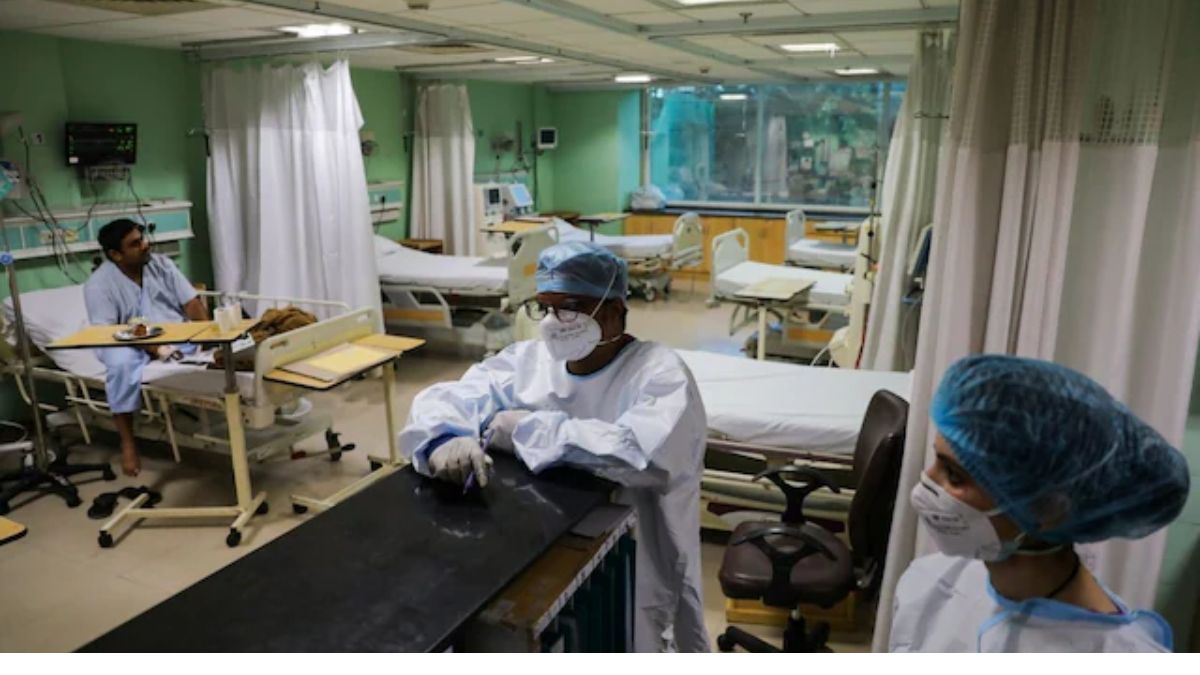Technological innovations like telemedicine, connected medical equipment, and AI-assisted decision-making are driving the need for a workforce that is resilient, adaptable, and capable of providing the best care possible to individuals in need
read more
With 1.3 billion people living in 3.3 million square kilometers, India is a country with enormous healthcare delivery issues. Despite, India being the second most populous country in the world, its healthcare system suffers from poor health indicators and a lack of workers. To address these challenges, there is a pressing need to enhance healthcare education and skilling, which are pivotal to building a robust, effective, and accountable health system.
The healthcare workforce in India is significantly undersupplied in the healthcare industry. To fulfill the increasing demand, an additional 1.54 million doctors and 2.4 million nurses are believed to be required.
The shortage emphasises how important it is to fund skill-building initiatives that effectively close the gap. India is committed to developing a strong healthcare workforce over the long term. By 2034, the government aims to have at least 2.5 doctors and 5 nurses per 1,000 people.
Key drivers for skilling initiatives
The demand for skilling programs in the healthcare industry is driven by multiple sources. The ambitious plan to add 3 million beds by 2025 calls for a major increase in the number of highly qualified healthcare workers. Additionally, there is a greater need for highly qualified individuals who can meet the unique requirements of medical tourists due to India’s expanding medical tourism sector.
This requirement is further highlighted by the intersection between healthcare and technology, where developments like generative AI, surgical robotics, and telemedicine are changing the way that healthcare is delivered.
Healthcare education is a continuous process. In hospitals, paramedical staff spend approximately 90% of their time with patients, necessitating extensive knowledge beyond their specialization. On-the-job training and ongoing education are essential for ensuring that healthcare personnel are capable of managing medical emergencies, reducing risks, and avoiding mistakes.
Hospital training programs have consequently developed into a wealth of information and practical experience.
Patient safety and quality improvement
In healthcare settings, patient safety is the most important factor. Medical facilities are held to high standards of patient care through strict rules and regulations, such as those enforced by the National Accreditation Board for Hospitals & Healthcare Providers (NABH) and international standards, such as those of the Joint Commission International.
Healthcare personnel must acquire and adhere to standard training guidelines covering infection control, handling biomedical equipment, and basic life support.
Initiatives aimed at developing skills could increase the proportion of women working in the healthcare industry. Healthcare-focused apprenticeship programs provide women with defined skill development pathways and the opportunity to gain specialized knowledge and real-world experience.
These initiatives promote a diverse and competent workforce by addressing the skills gap and enabling women to assume more prominent roles in the healthcare industry.
To ensure an effective force of skilled healthcare professionals, collaboration between the government and private medical facilities is essential. Healthcare facilities can invest in coaching and training initiatives to make the workplace safer for employees and patients. Continuous skill improvement leads to better overall healthcare delivery by raising clinical outcomes, decreasing readmission rates, and increasing patient satisfaction.
Emerging Trends and the Future
The healthcare industry is witnessing significant shifts in how services are delivered. Technological innovations like telemedicine, connected medical equipment, and AI-assisted decision-making are driving the need for a workforce that is resilient, adaptable, and capable of providing the best care possible to individuals in need.
The demand for ongoing education and skill development grows as the sector develops in order to stay up to date with new treatment approaches, findings from science, and changing patient needs.
Enhancing patient care, coordinating healthcare, and advancing medical research all depend on healthcare education and skill development. To fulfill the changing needs of the healthcare business and guarantee the provision of high-quality healthcare services, it is imperative to invest in thorough and current healthcare education.
India can develop a workforce of healthcare professionals who are equipped to tackle both present and future issues by building a culture of ongoing learning and collaboration.
Prashant Sharma is Managing Director, Charnock Hospital; Ravindra Pai is Deputy Managing Director, Peerless Hospitex Hospital and Research Centre Limited; and Sumit Sinhal is Managing Director, KINS Hospital (Members of NATHEALTH). The views expressed above are solely those of the authors, and they do not necessarily reflect Firstpost’s views.

)
)




